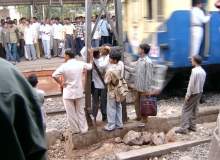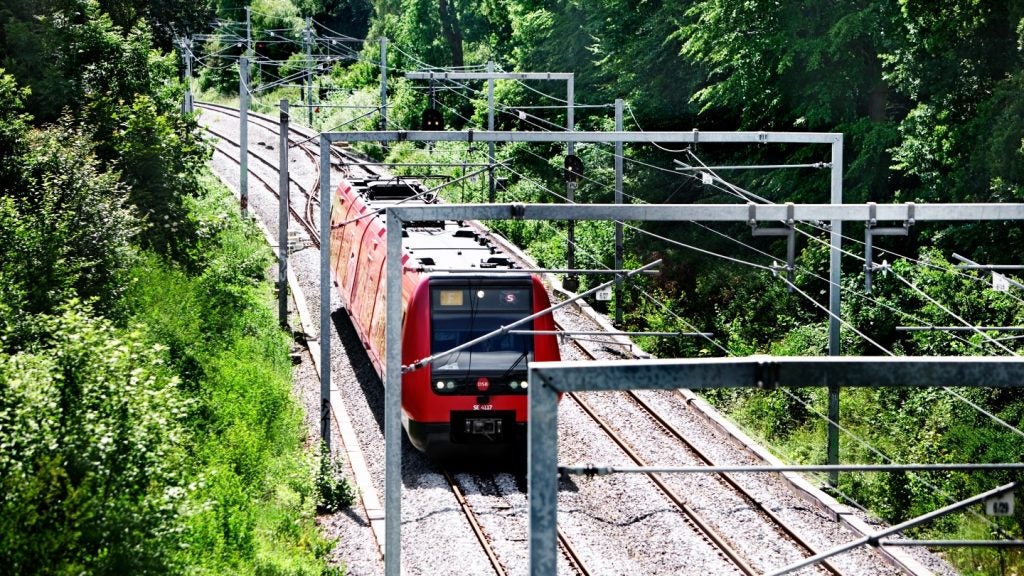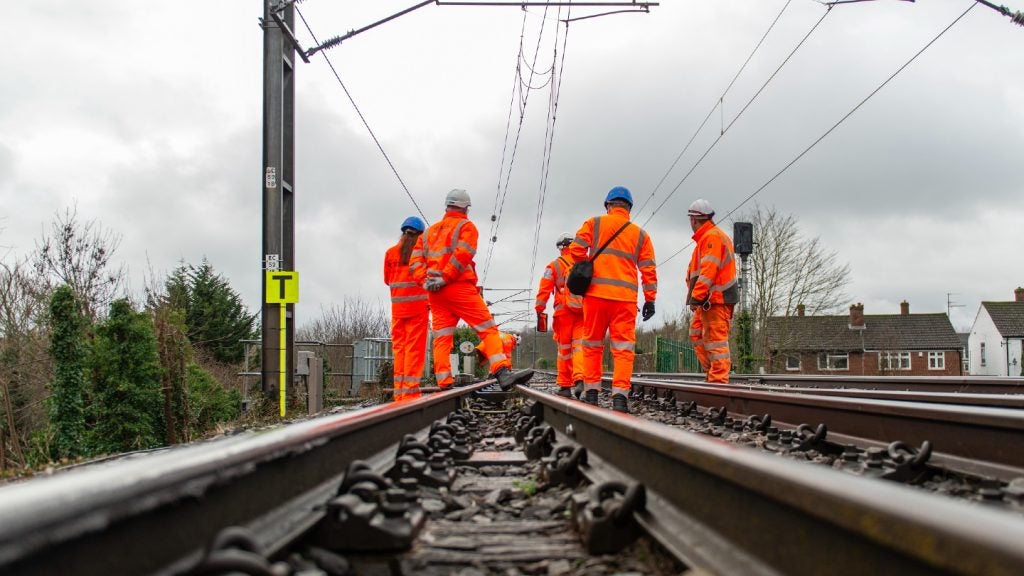

In the wake of Prime Minister Narendra Modi’s general election triumph in May 2014, India’s railways have found themselves bearing the weight of unusual expectation. India’s massive and somewhat rickety rail system has often been described as "the lifeline of the nation", but Modi’s administration has placed a particular emphasis on making the country’s railways faster, more reliable and more profitable, and has specifically linked the health of the rail system to the wider prospects of India’s economy.
"The railway system in our country, people have not paid attention to that," Modi said during a talk at the Council of Foreign Relations in New York. "But there is nothing bigger than this for economic development. This is the second-largest railway line in the world." President Pranab Mukherjee has been equally emphatic about the importance of rail improvements, noting in the wake of Modi’s election victory that "modernisation and revamping of railways is on top of the infrastructure agenda".
Bringing India’s railways into the 21st century
The modernisation of India’s railway network, bringing it up to a standard that can reasonably increase fares and reduce its reliance on state subsidies, is an epic undertaking. The sprawling system, encompassing more than 65,000km of track, 20,000 operating trains and more than 23 million daily passengers, has been compromised by "a vicious circle" of poor investment, according to the government’s newly-appointed Railway Minister Suresh Prabhu.
This underinvestment, together with legacy complications like the variety of different track gauges used across the country by Indian Railways, will make it extremely costly to bring the network into the 21st century, with some former ministers and private sector specialists estimating that the government would have to spend between $300bn and $500bn over the next ten years to expand and modernise, including the proposed ‘Diamond Quadrilateral’ of high-speed lines linking the cities of Mumbai, Delhi, Kolkata and Chennai.
See Also:
If India is to have any chance of truly tackling the problems its railways face, it must begin with the most fundamental responsibility of a rail system – ensuring the safety of its passengers and the general public. The country’s railway system is one of the most dangerous in the world, and improvements to safety and security on the overcrowded network should symbiotically feed into – and be fed by – generic upgrades across the broader network.
How well do you really know your competitors?
Access the most comprehensive Company Profiles on the market, powered by GlobalData. Save hours of research. Gain competitive edge.

Thank you!
Your download email will arrive shortly
Not ready to buy yet? Download a free sample
We are confident about the unique quality of our Company Profiles. However, we want you to make the most beneficial decision for your business, so we offer a free sample that you can download by submitting the below form
By GlobalDataRail safety: the extent of the problem
To understand the extent of Indian Railways’ chronic safety issues, one need look no further than some of the truly distressing official statistics of injuries and fatalities on the network. According to a 2012 report by a government-appointed rail safety review committee led by Dr Anil Kakodkar, around 15,000 people die on India’s rail system every year. "No civilised society can accept such a massacre on their railway system," wrote the report’s authors.
Both of India’s main political parties’ manifestos ahead of the 2014 elections contained high-speed train pledges.
A derailment in the state of Karnataka on 13 February is a potent reminder of the danger of large-scale train incidents. The accident killed at least 11 people and injured more than 150 when three carriages of the Bangalore-Ernakulam Intercity Express derailed near Anekal. It was the most recent in a long and frequent series of derailments and collisions on the network in the last year, including a train collision in October that left 12 people dead in Uttar Pradesh, a state that saw another 23 people die when a train derailed and smashed into a stationary goods train in May.
The 2012 committee report highlighted a number of major technical issues affecting passenger safety on Indian trains and infrastructure. The main source of rail fatalities are unmanned level crossings, which represent a safety issue on all rail networks where they are present, but particularly in countries like India, where overcrowding and a tendency for passengers to rush across train tracks contributes to higher risks.
In fact, overcrowding itself is a safety threat to Indian passengers, who have become used to hanging off the side of trains and riding on the top of carriages, leaving them vulnerable to deadly falls, electrocution or even colliding with bridges overhead. On the Mumbai Suburban Railway alone – the most crowded metropolitan commuter rail system in the world – Kakodkar’s report noted around 6,000 annual deaths.
Action, not words: tackling urgent safety problems
The physical sources of rail-related deaths – derailments, collisions, level crossing accidents – are clear, but a more insidious issue lies at the root of the problem. British colonialism has left the country with a massive, ancient and unstandardised rail network, and most observers agree that Indian Railways and its various subsidiaries have neither the resources nor the operational cohesion to properly deal with that legacy.
While high-level discussions about big ticket items like the Diamond Quadrilateral continue, safety issues have been the cause of a lot of talk but limited action. "Clearly, the priorities have to be redefined," argued the New Indian Express newspaper in February 2015. "There should be no compromise on higher investments on security, including round-the-clock patrolling on railway tracks, while headlines-grabbing bullet trains, additional train services can wait."
The 2012 committee report on rail safety noted that the recommendations made by previous safety panels had been ignored by Indian Railways and the government. Today the picture is virtually the same, only now it’s Kakodkar’s 2012 recommendations that aren’t being acted upon.
In fairness, it’s not simply a matter of organisational chaos and parliamentary stasis on the issue of safety – the sheer size of India’s rail network, not to mention its lack of financial independence, makes it incredibly difficult to deliver systemic change. Parliamentary discussions have revealed that safety-related spending on India’s railways has been gradually increasing, from around $6.3bn in 2013-14 to just over $7bn in 2014-15. Nevertheless, given the scale of the challenge, a huge sum of money can end up looking like a drop in the ocean.
Steps to safety
Virtually every major safety issue facing the railways has received attention in some form, but trials and piecemeal implementation don’t seem to be bringing Indian Railways any closer to the kind of wide-scale deployment that will save thousands of lives across the country.
The Train Collision Avoidance System (TCAS), a domestically-developed collision detection system intended to minimise the risk of collisions by applying automatic brakes in the case of driver error and using radio frequency identification (RFID) to inform drivers about the location and speed of locomotives within 2-3km, has been in development for years.
"Third-party validation for the TCAS is going on," Southern Railway chief signal and telecom engineer S Manohar told the New Indian Express in September 2014. "The work to develop the system will be awarded to Indian firms and the technology will be implanted on all important train routes of Indian Railways."
Collision detection and train control systems are commonplace elsewhere in the world, but officials say the TCAS is significantly cheaper to implement than foreign technologies like the European-developed Train Protection Warning System, making it a cheaper retrofit on India’s 60,000km of track that uses block signalling. Still, the timeline is hazy on delivery of the TCAS, which is still being developed and tested after years of work.
The danger posed by level crossings has similarly been known for years; Kakodkar’s report recommended that around $6bn be spent between 2012 and 2017 to achieve the "total elimination of all level crossings (manned and unmanned)". But given the globally-acknowledged expense of replacing level crossings with bridges or underpasses, this was always an unrealistic target.
The United States has the world’s longest railway network, followed by China and India.
Today, very little impact on the number of level crossings has been made, and deaths are still commonplace. For the period 1 April to 30 June 2014, unmanned level crossings accounted for 45% of deaths in rail incidents. Politicians continue to make speeches about the need to replace crossings, while deaths continue to rack up and local people complain of a lack of action.
As Railway Minister Suresh Prabhu prepares to launch his first railway budget, the scale of safety problems on the country’s network must be an intimidating proposition. The myriad technologies, processes and infrastructure needed to reduce the risk to India’s rail passengers requires nothing less than a total commitment from Indian Railways and the government, even if it means delaying high-profile expansion projects. Major recommendations, such as the creation of a powerful statutory railway safety authority and the wider adoption of safer Linke Hofmann Busch rail coaches, which are less likely to derail, remain frustratingly unfulfilled.
The safety of rail users and staff must form the basis for all improvements moving forward, the benchmark upon which to build, otherwise the government risks being seen as more concerned with headlines and international prestige than the wellbeing of its own people. As the New Indian Express put it in a recent editorial: "The focus should not be so much on bullet trains and announcing new routes, but on safety and security of lakhs [hundreds of thousands] of countrymen for whom Indian Railways is the cheapest and even now the most reliable mode of transport for long distance travel."





